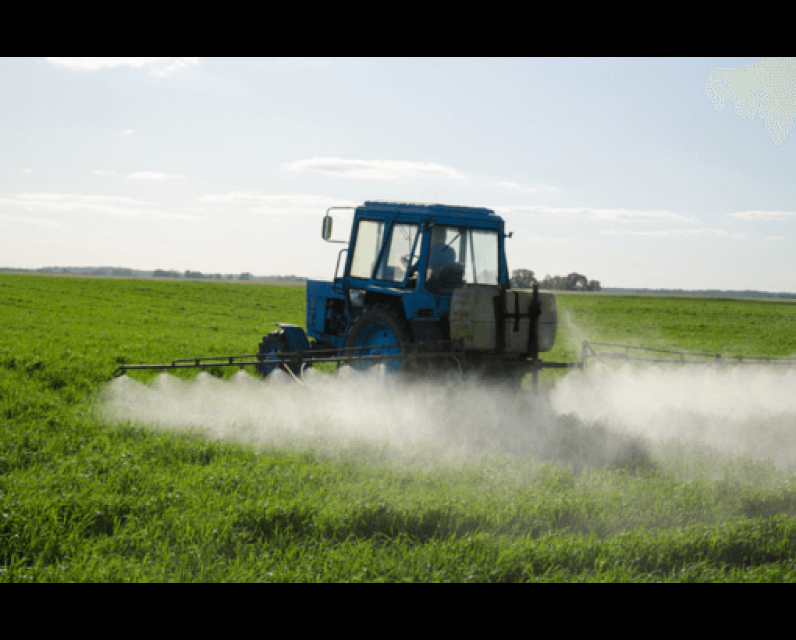Unpublished Opinions
Editor of Digileak Canada, Executive Director of the Canadian Council on Food Safety and Health, videographer, singer, poet, gardner and avid cyclist.
Chemical Madness! by Robert Hunziker / April 23rd, 2018

First published in Dissidentvoice.com on April 23rd, 2018. Letter was republished on the Canadian Council for Food Safety and Health on April 23rd. Webstie: http://CCFSH.org
All of humanity currently risks exposure to toxic chemicals all over creation in a similar vein to the Mad Hatter of Alice in Wonderland fame. And, maybe, as a result, goin’ kinda looney and getting horribly, dreadfully sick!
As soon as the Spring of 2018, the EPA will decide whether to risk the slaughter of birds and bees and pollinators that serve critical functions in crop production, as well as goosing-up the likelihood of chronic illnesses of citizens. The issue behind this flirtation with disease, sickness, pain, and death is regulation, or lack thereof, of chemical pesticides.
Meanwhile on a grand scale, and following decades of superfluity, the planet gurgles, drowning in a massive saturation of chemicals found far and wide, as high as Mt. Everest (arsenic and cadmium) as deep as PCB-infested squid in the Mariana Trench, glowing bright shiny toxicity.
This article discusses only a tiny smattering of chemical madness that haunts the world yet a subject of thousands of articles of research discussing potential dangers to health of which the public is dreadfully unaware.
Thus, the overriding thesis herein: Unwittingly, society is poisoning itself.
All of humanity currently risks exposure to toxic chemicals all over creation in a similar vein to the Mad Hatter of Alice in Wonderland fame. And, maybe, as a result, goin’ kinda looney and getting horribly, dreadfully sick!
As soon as the Spring of 2018, the EPA will decide whether to risk the slaughter of birds and bees and pollinators that serve critical functions in crop production, as well as goosing-up the likelihood of chronic illnesses of citizens. The issue behind this flirtation with disease, sickness, pain, and death is regulation, or lack thereof, of chemical pesticides.
Meanwhile on a grand scale, and following decades of superfluity, the planet gurgles, drowning in a massive saturation of chemicals found far and wide, as high as Mt. Everest (arsenic and cadmium) as deep as PCB-infested squid in the Mariana Trench, glowing bright shiny toxicity.
This article discusses only a tiny smattering of chemical madness that haunts the world yet a subject of thousands of articles of research discussing potential dangers to health of which the public is dreadfully unaware.
Thus, the overriding thesis herein: Unwittingly, society is poisoning itself.
Understandably, it does not seem natural that 150,000,000 out of a population of 320,000,000 have chronic disease conditions. What’s up?
Chronic diseases, such as cardiovascular disease and type 2 diabetes, are often referred to as lifestyle diseases. This is because lifestyle factors, such as inactivity, diet, and smoking play a significant role in human protoplasm. But, is there something else behind this ongoing tragedy? Probabilities would say the answer is a resounding yes!
The Neonicotinoid Epidemic
By and large, Americans depend upon the Environmental Protection Agency (EPA) to help shield from dangerous chemicals. In that regard, the EPA is currently contemplating approval of the pesticide thiamethoxam, allowing it to be sprayed directly on 165 million acres of wheat, barley, corn, sorghum, alfalfa, rice, and potatoes.
Thiamethoxam, an insecticide, is a neonicotinoid.
According to a major study: “Neonicotinoids are compounds that affect the nervous system of insects, humans, and other animals.”2
Twenty-nine (29) independent scientists who conducted a global review of more than 1,000 independent studies on neonicotinoids found overwhelming evidence linking the pesticides to declines in populations of bees, birds, earthworms, butterflies and other wildlife.3
When using chemicals to kill specific pests, does it also make sense to collaterally kill bees, earthworms, butterflies, and other wildlife that form and create the backbone of ecosystems vital to human food, health, and well being?
Or, looked at another way, how did the world’s population grow crops and sustain population growth over the past couple of thousand years without chemical pesticides? For certain, the Roman Empire did not spray chemicals on crops nor did the British Empire of the 19th and early 20th centuries nor did America as it settled the frontier from Pennsylvania to California.
According to a landmark UN report d/d 2017:
Excessive use of pesticides are very dangerous to human health, to the environment and it is misleading to claim they are vital to ensuring food security… Chronic exposure to pesticides has been linked to cancer, Alzheimer’s and Parkinson’s diseases, hormone disruption, etc….4
Prior to the year 2000 neonicotinoid chemicals were used but largely unknown. Since then, they have become the most widely used agricultural insecticide on the planet. Despite this universality of use, amazingly, human toxicity issues via ingestion of chemically sprayed fruits and vegetables are not yet fully understood. That’s discomforting.
Meanwhile, bees and other pollinators are dropping dead like… well, like flies. Thus, pesticides designed to kill pests of crops are, in fact, killing insects that pollinate crops. Consider: 1,000 independent studies found “overwhelming evidence linking pesticides to declines in populations of bees, birds, earthworms, butterflies, and other wildlife.”
Scandalously, by all appearances, humanity is killing off the base of the food chain, as mentioned in numerous research reports regarding near-total collapse of several insect pollinator species worldwide.
It should be noted that the EPA has broadened its stance on pesticides and protection of pollinators as expressed on the EPA web site under the headline: “EPA Actions to Protect Pollinators.” But, it has not banned usage of neonicotinoids. EPA is currently in a “public comment period” until late April 2018 prior to assessment of approval of thiamethoxam.
Imidacloprid is another insecticide in the class of neoicotinoids but used on sucking insects, termites, soil insects, and fleas on pets. According to a significant study:
In many areas of intensive agriculture, surface water is contaminated with imidacloprid. As a result, non-target insects are exposed to an extremely toxic substance for a long time, which can lead to massive insect mortality and a break in the food chain… The risks of imidacloprid have been completely underestimated, with catastrophic consequences….5
The Tennekes’ study discusses “a break in the food chain” because of the use of an insecticide. That is a prime example of one of many studies that seldom appear in mainstream publications even though the message is critically important to quality of life and death matters.
In the final analysis, flirting with too much chemical saturation is not understood 100% for certain, but the literature is filled with tons and tons of research about chemical obsession, usage, and the dangers thereof. However, there is very little astute, careful threading-the-needle-type regulation by governmental regulators, mostly accepting internal studies passed on from chemical manufacturer in-house studies.
Meantime, the massive amount of chemicals spewing onto ecosystems is a relatively new phenomenon, mostly within the past few decades and few have been properly tested for harmful effects. Here’s the problem: Similar to radioactive isotopes, like those emitted at Fukushima Daiichi Nuclear Power Plant that slowly accumulate in the body with a latency affect, chemicals in the environment do the same. Problem is, once the problem fully manifests, it’s too late. By then, it is totally out of control.
The studies mentioned herein seem to somehow, someway but not 100% for sure connect to the horrific results of the Rand study showing 150,000,000 Americans with at least one chronic condition.
Albeit, the life and death question of the century remains: Does excessive chemical exposure cause chronic diseases, or is it something else at work on the human body? Nobody knows the answer with certainty. But, a multitude of studies that unfortunately collect dust on bookshelves or stuck in PC files out of public view do show evidence of direct linkage. Still, nobody has affirmatively, in the mainstream, connected those dots on behalf of the public at large.
Postscript:
When God created the Garden of Eden, she didn’t use synthetic fertilizers, pesticides, herbicides and GMO apples.
— Khang Kijarro Nguyen, Multidisciplinary Artist
- Chronic Conditions in America: Price and Prevalence, Rand Review, July 2017. [↩]
- Jennifer Hopwood, et al, How Neonicotinoids Can Kill Bees, 2nd Ed. The Xerces Society for Invertebrate Conservation, 2016. [↩]
- EPA Considers Allowing Bee-Killing Pesticide To Be Sprayed on 165 Million Acres of U.S. Farmland, Center for Biological Diversity, EcoWatch, December 19, 2017. [↩]
- UN Human Rights Experts Call for Global Treaty to Regulate Dangerous Pesticides, UN News, March 7, 2017. [↩]
- Henk A. Tennekes, “The Importance of Dose-Time-Response Relationships for Hazard Identification and Limitation of Animal Experiments”, Journal of Toxicology, Vol. 1, Issue 5 – August 2017. [↩]
This article was posted on Monday, April 23rd, 2018 at 2:18pm and is filed under Chronic Diseases, Ecocide, Ecosystems, Health/Medical, Insects, Nature, Pesticides.



Comments
Be the first to comment